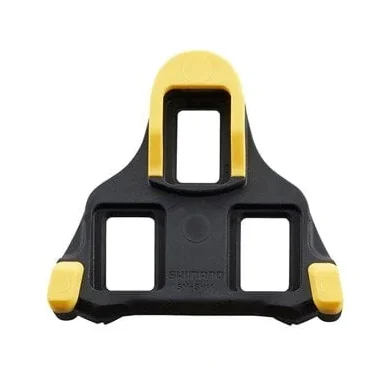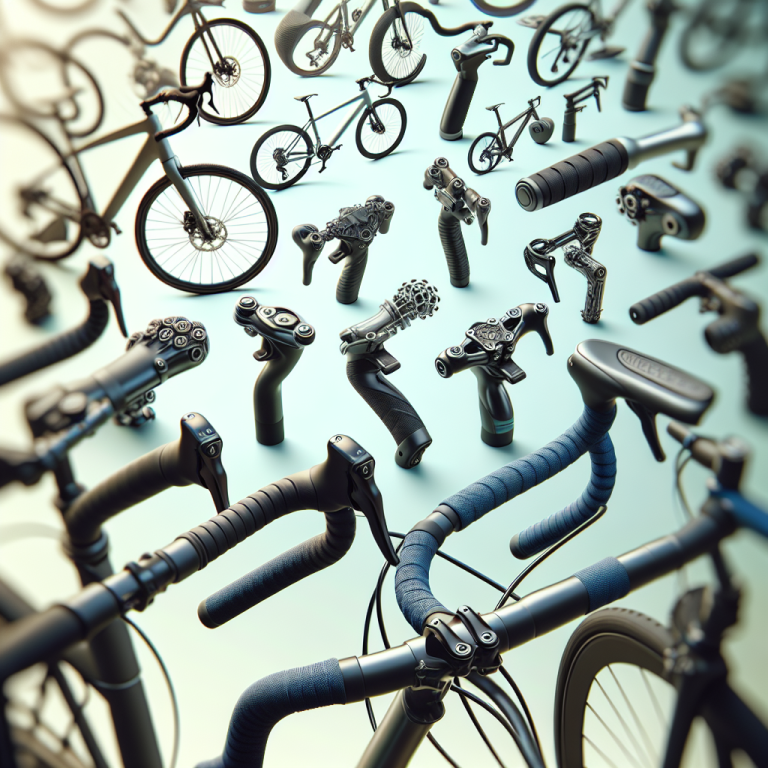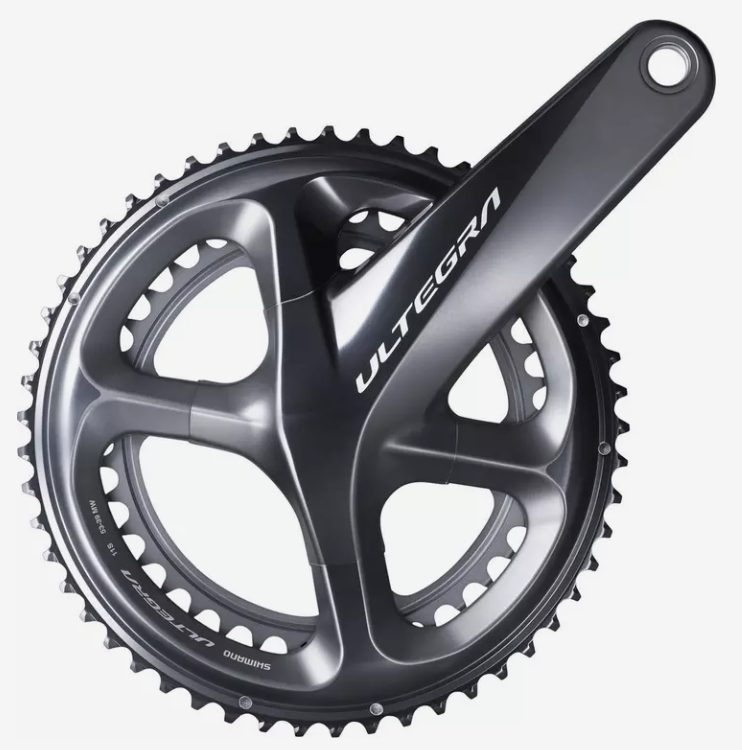If you’re a passionate cyclist, you know that having the right gear can make all the difference in your performance. One crucial component of cycling gear are cleats, those small metal or plastic devices that attach to the soles of your shoes, providing a secure connection to the pedals. But here’s the burning question: do cleats fit all cycling shoes? In this article, we’ll explore the compatibility of cleats with different types of cycling shoes, ensuring that you can make an informed decision when it comes to your next shoe purchase. When it comes to cycling, having the right equipment is crucial for optimal performance and safety. One important element that often gets overlooked is the cleats. Cleats are the metal or plastic attachments that attach to the bottom of your cycling shoes and clip into the pedals. They provide a secure connection between your feet and the pedals, allowing you to efficiently transfer power from your legs to the bike. However, not all cleats are created equal. There are different types of cleats available, each with its own set of features and compatibility requirements.
Table of Contents
ToggleLook Cleat
Look cleats are one of the most popular and widely used types of cleats in the cycling community. They feature a three-bolt design, which provides a stable connection between the shoe and the pedal. Look cleats are commonly used in road cycling and offer a wide platform for optimized power transfer. They are also known for their relatively large float range, allowing for more natural foot movements while pedaling.
SPD Cleat
SPD cleats, also known as Shimano Pedaling Dynamics cleats, are commonly used in mountain biking and recreational cycling. One of their key features is the two-bolt design, which provides easier and quicker engagement and disengagement from the pedal. SPD cleats are known for their durability and versatility, as they can be used in a variety of cycling shoes, including some road cycling shoes.
SPD-SL Cleat
SPD-SL cleats are designed specifically for road cycling. They feature a three-bolt design and provide a larger contact area with the pedals compared to SPD cleats. This larger contact area enhances stability and power transfer, making SPD-SL cleats a popular choice among road cyclists. However, it’s important to note that SPD-SL cleats are not compatible with SPD pedals or shoes.
Speedplay Cleat
Speedplay cleats are unique in their design and functionality. They feature a four-bolt design and are known for their adjustability and customizable float. Speedplay cleats offer a wide range of float options, allowing riders to personalize their foot position and comfort. They are commonly used in road cycling and are popular among riders who prefer a highly adjustable cleat system.
Time Cleat
Time cleats are another option to consider, especially for road cyclists. They feature a four-bolt design and provide a stable connection between the shoe and the pedal. Time cleats offer adjustable float and release tension, allowing riders to customize their riding experience. These cleats are known for their reliability and precision, making them a popular choice for road cycling enthusiasts.
Now that you are familiar with the different types of cleats available, it’s important to understand their compatibility with cycling shoes. Cleat compatibility can depend on several factors, including shoe brands, cleat bolt pattern, and the number of bolts on the cleats.
Cleat and Shoe Brands
Different shoe brands may have their own proprietary cleat systems that are only compatible with their specific shoes. For example, Look cleats are generally designed to be used with Look cycling shoes, while Shimano cleats are compatible with Shimano shoes. It’s essential to check the compatibility between your cleats and shoes to ensure a proper fit.
Cleat Bolt Pattern
Cleat bolt patterns refer to the arrangement and number of bolts on the cleats. Different types of cleats have varying bolt patterns, such as three-bolt patterns for Look and SPD-SL cleats, and two-bolt patterns for SPD cleats. It’s important to match the bolt pattern on your cleats with the bolt holes on your cycling shoes for a secure and stable fit.
3-bolt vs. 2-bolt
As mentioned earlier, some cleats, such as Look and SPD-SL cleats, have a three-bolt design, while others, like SPD cleats, have a two-bolt design. It’s crucial to ensure that your shoes are compatible with the number of bolts on your cleats. Attempting to use a three-bolt cleat with a two-bolt shoe, or vice versa, will likely result in a poor fit and compromised performance.
Float and Release Tension
Float refers to the degree of movement allowed by the cleats before they disengage from the pedals. This lateral movement is important for reducing stress on the joints and preventing discomfort. Release tension refers to the amount of force required to disengage the cleats from the pedals. Different cleat systems offer varying levels of float and release tension, so it’s important to choose one that suits your riding style and preferences.
Cleat Positioning
Proper positioning of the cleats on your shoes is crucial for comfort and efficiency. The position of the cleats can affect your pedaling biomechanics and foot stability. It’s recommended to consult with a professional bike fitter or experienced cyclist to determine the optimal cleat position for your specific needs. Factors such as shoe structure, foot pronation, and arch support can also influence the positioning of the cleats.
Now that you understand the factors affecting cleat fit, which include shoe structure, cleat and shoe sizing, cleat adjustability, cleat wear and tear, and foot pronation, you may be wondering if there are universal cleats that can fit all cycling shoes. While there are universal cleats available, they may not provide the same level of compatibility and performance as specific cleats.
Universal Cleats
Universal cleats are designed to fit a wide range of cycling shoes and are often adjustable to suit different bolt patterns and positioning requirements. These cleats can be a convenient option if you own multiple pairs of cycling shoes with different cleat designs. However, it’s important to note that universal cleats may not offer the same level of precision and compatibility as specific cleats designed for particular shoe brands or cycling disciplines.
Specific Cleats
Specific cleats are designed by manufacturers to be used with their specific cycling shoes. These cleats are often engineered to provide optimal power transfer, stability, and comfort when paired with the corresponding shoes. Using specific cleats can enhance your overall cycling experience, especially if you are dedicated to a particular brand or cycling discipline. It’s worth considering specific cleats if you want to maximize the performance potential of your cycling shoes.
When it comes to choosing the right cleats for your cycling shoes, there are several factors to consider. Researching cleat compatibility is crucial, as it ensures that the cleats you choose will fit your specific shoes and pedals. It’s helpful to read product reviews and consult with experienced cyclists or bike shop professionals to gather information and insights on various cleat options.
Trying Different Cleat Brands
Sometimes, the best way to determine the right cleat fit is through trial and error. By trying different cleat brands and styles, you can assess the comfort, compatibility, and performance of each option. This process can be time-consuming and may require some financial investment, but it can ultimately lead to finding the perfect cleats for your individual needs.
Consulting with Professionals
If you’re unsure about which cleats to choose or how to position them correctly, it’s always beneficial to seek the guidance of professionals. Bike fitters and experienced cyclists can offer valuable advice and expertise on cleat selection, positioning, and adjustments. They can evaluate your riding style, foot mechanics, and specific goals to help you make an informed decision.
Considering Performance Needs
Different cycling disciplines require specific cleat features for optimal performance. Road cyclists, for example, may prioritize power transfer and stability, while mountain bikers may prioritize ease of engagement and disengagement. Consider your performance needs and the demands of your chosen cycling discipline when selecting cleats. Choosing cleats that align with your performance goals can enhance your overall riding experience.
Future Shoe Compatibility
If you’re planning to upgrade your cycling shoes in the future, it’s important to consider the compatibility between your current cleats and potential new shoes. Some cleat designs are only compatible with specific shoe models or brands, while others offer broader compatibility. Keeping this in mind can save you from needing to replace your cleats when you upgrade your shoes.
Modifying cleat fit can be an option if you’re experiencing discomfort or an improper fit. However, it’s worth noting that making modifications may void any warranties on your cycling shoes.
Shoe Modifications
Certain shoe modifications can be made to improve cleat fit and alignment. This can include custom insoles or inserts, shims, or alternate position adjustments. However, it’s strongly recommended to consult with a professional bike fitter or cycling shoe specialist before making any modifications to ensure they are done correctly and effectively.
Cleat Shims and Spacers
Cleat shims and spacers can be used to adjust the position and angle of the cleats on your shoes. They can be helpful for fine-tuning the fit and alignment, especially if you’re experiencing knee pain or other discomfort. Cleat shims and spacers are available in various sizes and thicknesses, allowing for precise adjustments to suit your specific needs.
Proper cleat fit plays a vital role in an enjoyable and efficient cycling experience. Here are a few reasons why getting the right cleat fit is of utmost importance:
Efficiency and Power Transfer
A proper cleat fit ensures that your power is efficiently transferred from your legs to the bike, allowing you to generate more power with each pedal stroke. A secure connection between your cycling shoes and the pedals minimizes energy loss and maximizes your pedaling efficiency.
Comfort and Foot Stability
Cycling can be a demanding and repetitive activity, so it’s essential to prioritize comfort. A proper cleat fit enhances foot stability, reducing the risk of hotspots, numbness, and discomfort. When your cleats fit correctly, you can focus on your ride and enjoy a more comfortable cycling experience.
Reduced Risk of Injuries
Poor cleat fit can lead to a variety of foot, knee, and leg injuries. Improper alignment or positioning of the cleats can cause excessive stress on the joints and soft tissues, resulting in pain and potential long-term injuries. Getting the right cleat fit can help prevent common cycling injuries and promote overall foot health.
Differences in Cycling Disciplines
Different cycling disciplines have varying demands and requirements, and having the right cleat fit can greatly impact your performance. Road cyclists, for example, benefit from a secure and stable pedaling platform, while mountain bikers may prioritize ease of engagement and disengagement. Understanding the specific needs of your chosen cycling discipline and selecting appropriate cleats can enhance your overall performance and enjoyment.
Over time, cycling shoes may need to be replaced due to wear and tear or technology advancements. When considering replacing your cycling shoes, it’s important to evaluate cleat compatibility.
Evaluating Cleat Compatibility
Before investing in a new pair of cycling shoes, consider whether your current cleats are compatible with the new shoes. Check the cleat bolt pattern, the number of bolts required, and any other specific requirements for compatibility. Ensuring compatibility between your new shoes and existing cleats will save you from needing to purchase new cleats or compromise your riding experience.
Upgrading Shoe Technology
Replacing your cycling shoes presents an opportunity to benefit from the latest shoe technology advancements. New shoe designs may offer improved comfort, ventilation, stiffness, or adjustability features that can enhance your overall cycling experience. Take the time to research different shoe options and choose the ones that align with your specific needs and preferences.
Repositioning Cleats
When transferring your cleats to new shoes, it’s crucial to ensure proper positioning and alignment. Cleat position can greatly affect your pedaling biomechanics, foot stability, and overall comfort. Take the time to carefully position and adjust your cleats on your new shoes for the best possible fit.
Transferring Cleats to New Shoes
If your existing cleats are still in good condition and compatible with your new cycling shoes, you can simply transfer them. However, be sure to thoroughly inspect your cleats for any signs of wear and tear. Worn-out cleats may compromise performance and safety, so it’s advisable to replace them if necessary.
Avoiding common cleat fit errors is essential for enjoying a seamless and comfortable cycling experience.
Incorrect Cleat Positioning
One common error is improper cleat positioning. Placing the cleats too far forward or backward on the shoe can cause discomfort, inefficiency, and potential injury. Consult with a professional bike fitter or experienced cyclist to ensure the optimal positioning of your cleats for your riding style and foot mechanics.
Tightened Cleat Bolts
Over-tightening cleat bolts can lead to unnecessary stress on your shoes and cleats. It’s important to follow the manufacturer’s recommended torque specifications when installing or adjusting your cleats. Tightening the bolts just enough to secure them in place is sufficient and helps prevent damage to your cycling shoes.
Mismatched Cleat Types
Using the wrong cleat type for your cycling discipline or pedal system is another common mistake. Different types of cleats are designed for specific purposes and are not interchangeable. Using incompatible cleats can compromise your pedaling efficiency, comfort, and safety. Always ensure that the cleats you choose are compatible with your shoes and pedals.
Worn-out Cleat Treads
Cleat treads can wear out over time due to the repetitive nature of cycling. As the treads wear down, they become less effective at securely gripping the pedal. Worn-out cleat treads can lead to instability, disengagement issues, and potential accidents. Regularly inspect your cleats for any signs of wear and tear, and replace them when necessary to maintain optimal performance and safety.
Proper maintenance and care of your cleats can extend their lifespan and ensure optimal performance.
Inspecting Cleats Regularly
Regularly inspecting your cleats is essential for identifying any signs of wear and tear. Look out for worn-out treads, cracks, or any visible damage that may compromise the effectiveness and safety of your cleats. Regular inspections can help prevent unexpected issues during rides and give you peace of mind.
Replacing Worn-out Cleats
When your cleats show signs of significant wear or damage, it’s time to replace them. Worn-out cleats can affect your pedaling efficiency, foot stability, and overall safety. Replacing cleats in a timely manner ensures that you can continue enjoying optimal performance and comfort on your rides.
Cleaning and Lubricating Cleats
Keeping your cleats clean and well-lubricated is important for their longevity and performance. Dirt, debris, and moisture can accumulate on your cleats, affecting their engagement and disengagement. Regularly clean your cleats with a soft brush or cloth, and apply a suitable lubricant to keep them functioning smoothly.
Storing Shoes and Cleats Properly
Proper storage of your cycling shoes and cleats helps maintain their condition and functionality. Avoid leaving your shoes and cleats in damp or excessively hot environments, as these conditions can degrade the materials and affect performance. When not in use, store your shoes and cleats in a cool, dry place to prevent unnecessary wear and damage.
In conclusion, having the right cleat fit is crucial for a comfortable and efficient cycling experience. Understanding the different types of cleats, their compatibility with cycling shoes, and the factors that affect cleat fit can help you make informed decisions. Choosing the right cleats, consulting with professionals when needed, and properly maintaining your cleats can enhance your overall riding performance, comfort, and safety. Enjoy your rides with the confidence of knowing that your cleats are perfectly suited to your feet and pedals.







